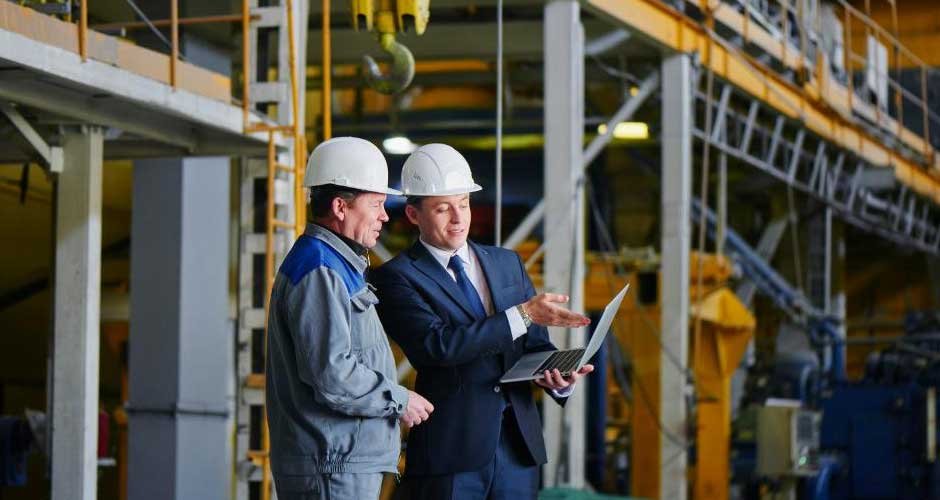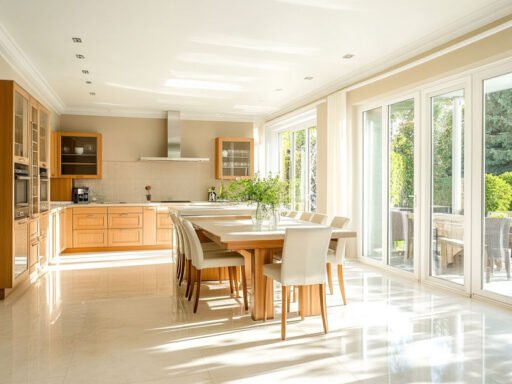The construction industry is constantly evolving, isn’t it? New technologies and materials are always coming into play, reshaping how we build and what we build with. One of the biggest game-changers in recent years has been metal fabrication. But what exactly is metal fabrication, and why should business owners like you care? Let’s dive in and explore how this innovative process is not just another trend but a powerful tool that could redefine the future of construction.
Understanding Metal Fabrication in Construction
First things first, what is metal fabrication? In simple terms, it’s the process of cutting, bending, and assembling metal to create specific components or structures. Think of it like crafting with metal instead of wood or plastic. The beauty of metal fabrication lies in its versatility. Whether you’re using steel, aluminum, or another type of metal, the options are almost endless. From beams and columns to intricate staircases and custom fixtures, fabricated metal components can be seen in just about every corner of a construction site.
Why Should You Consider Metal Fabrication?
So, why should you consider metal fabrication for your next project? There are plenty of reasons, and they go beyond just looking cool. Let’s break down some of the key benefits:
- Durability and Strength: We all know that construction is about building something that lasts. Metal, particularly when fabricated to precise specifications, offers exceptional strength and durability. Unlike wood or plastic, metal doesn’t warp or crack over time, which means your structures will stand tall and strong for decades.
- Customization and Flexibility: Ever had a project where you needed something that just didn’t exist in the catalog? This is where custom metal parts manufacturing excels, giving you the ability to make components that are exactly matched to your requirements, guaranteeing a perfect fit for every facet of your project. No more “making do” with off-the-shelf parts that aren’t quite right.
- Cost-Efficiency: Here’s a question for you—who doesn’t like saving money? Metal fabrication can be surprisingly cost-effective. By precisely cutting and forming metal components, there’s less waste, and you can often reduce labor costs since these parts are quicker to install on-site. Plus, you’re saving on the potential costs of repairs or replacements down the line, thanks to the durability factor we just talked about.
- Speed of Construction: Time is money, right? One of the biggest advantages of metal fabrication is that it speeds up the construction process. Since many components can be pre-fabricated off-site and then quickly assembled on-site, you can significantly reduce your construction timeline. This means getting your project completed faster and moving on to the next one.
- Sustainability: In today’s world, being eco-friendly isn’t just a buzzword—it’s a necessity. Metal is one of the most recyclable materials out there, which makes metal fabrication a greener choice for construction. It reduces waste, uses fewer natural resources, and helps create a more sustainable building process.
Innovations in Metal Fabrication That Are Shaping Construction
Innovation is the name of the game in construction, and metal fabrication is no exception. New technologies are constantly emerging, making the process even more efficient and versatile. For example:
- Advanced Fabrication Techniques: Techniques like laser cutting, CNC machining, and robotics are revolutionizing how we work with metal. These methods allow for more precise cuts, intricate designs, and faster production times, all of which translate into better quality and lower costs for your projects.
- Modular Construction: Have you ever heard of modular construction? It’s a method where buildings are constructed in sections or “modules” that are then assembled on-site. Metal fabrication plays a huge role here, providing the structural components needed to create these modules. The result? Faster build times, reduced labor costs, and the ability to construct in almost any weather.
- Prefabrication and Off-Site Fabrication: Speaking of working off-site, more and more construction is happening away from the actual job site. Prefabricating components in a controlled environment means fewer delays due to weather, better quality control, and faster assembly once everything gets to the site.
Where Can You See Metal Fabrication in Action?
If you’re still not convinced, consider this: metal fabrication is already everywhere in construction, whether you’ve noticed it or not. Here are just a few examples:
- Commercial Buildings: From skyscrapers to shopping malls, metal frameworks provide the backbone for many commercial structures. The strength and durability of metal make it ideal for buildings that need to withstand heavy loads and harsh weather conditions.
- Residential Construction: Metal isn’t just for big commercial projects. More and more homes are incorporating custom metal fixtures and fittings, from spiral staircases to modern, sleek roofing materials.
- Infrastructure Projects: Think bridges, tunnels, and overpasses. Metal fabrication is key in creating the durable, long-lasting structures that form our infrastructure. The ability to fabricate large, heavy-duty components off-site and then transport them for installation is a massive benefit.
- Green Building Projects: As we mentioned earlier, sustainability is a big deal. Metal’s recyclability makes it a preferred choice for green building projects aiming to reduce their environmental footprint.
Key Considerations for Business Owners
Alright, so you’re interested. But where do you start? Here are a few things to keep in mind if you’re considering incorporating metal fabrication into your construction projects:
- Choosing the Right Fabrication Partner: Not all fabricators are created equal. Look for a partner with experience, the right technology, and a track record of quality work. Ask for references, check out their previous projects, and make sure they understand your specific needs.
- Quality Control and Compliance: It’s not just about looking good—your fabricated components need to meet industry standards and regulations. Make sure your fabricator has robust quality control processes in place to ensure everything meets the necessary codes and specifications.
- Cost-Benefit Analysis: Sure, there might be some upfront costs involved, but think long-term. The durability, reduced maintenance, and quicker construction times often make metal fabrication a smart investment that pays off down the road.
- Integrating Metal Fabrication into Your Existing Practices: This might seem like a big change, but it doesn’t have to be. Start small by incorporating metal fabrication into a part of your project, or partner with a fabricator to explore how you can best integrate these processes into your workflow.
Looking Ahead: The Future of Metal Fabrication in Construction
So, what’s next for metal fabrication in construction? The future looks bright, with even more innovations on the horizon. We’re likely to see increased use of automated processes, more integration with digital design tools, and continued emphasis on sustainability. And as technology continues to evolve, the possibilities for what we can create with metal fabrication are endless.
But don’t just take our word for it—think about how these trends could impact your own projects. Could metal fabrication be the key to taking your construction business to the next level?
Wrapping It Up
There you have it—a comprehensive guide to how metal fabrication can transform the construction industry. From its benefits in durability and cost-efficiency to its role in innovative building techniques, metal fabrication is more than just a passing trend. It’s a powerful tool that can help you build better, faster, and more sustainably.
Ready to take the next step? Consider reaching out to a trusted metal fabricator and explore the possibilities for your next project. Whether you’re building a skyscraper or a family home, metal fabrication could be the key to unlocking new potential in your construction endeavors.





